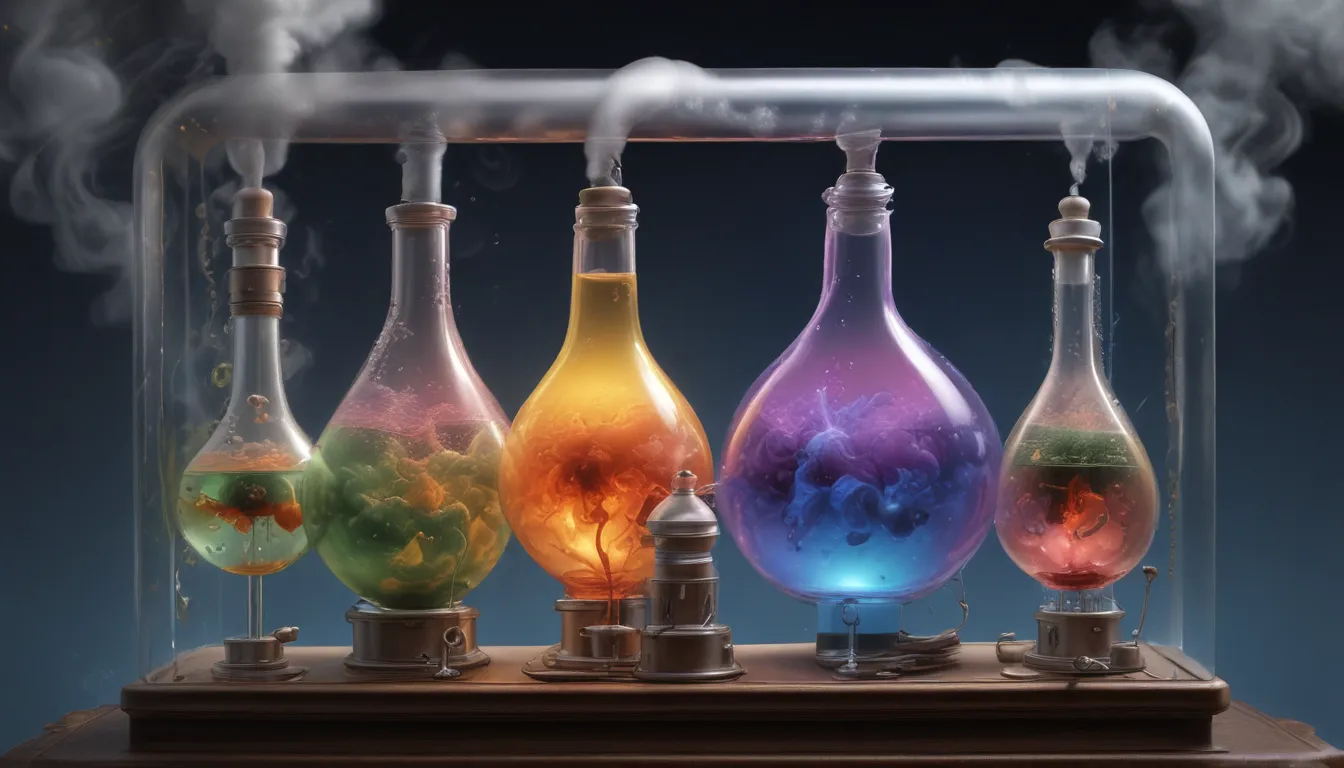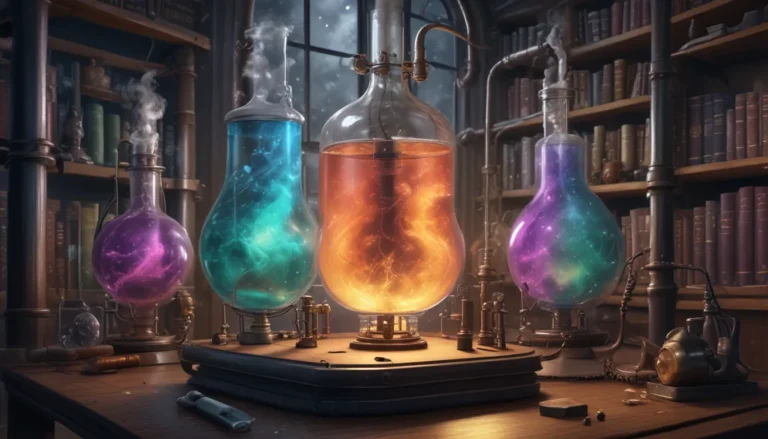A Note About Images: The images used in our articles are for illustration purposes only and may not exactly match the content. They are meant to engage readers, but the text should be relied upon for accurate information.
Gay-Lussac’s Law of Gases, also known as the Pressure Law or the Law of Combining Volumes, is a foundational concept in the realm of physics. Named after the notable French chemist and physicist Joseph Louis Gay-Lussac, this law has captivated scientists for centuries with its enigmatic properties and implications. In this article, we will embark on a journey to uncover the depths of Gay-Lussac’s Law and explore twelve fascinating facts that shed light on its significance and applications.
Understanding the Fundamental Relationship Between Pressure and Temperature
Gay-Lussac’s Law of Gases elucidates that, for a given amount of gas at a constant volume, the pressure and temperature exhibit a direct proportional relationship. This means that as the temperature of a gas increases, so does its pressure, and conversely, as the temperature decreases, the pressure decreases as well. This fundamental principle allows scientists to predict gas behavior accurately and design systems with real-life applications in mind.
The Significance of the Ideal Gas Law in Gas Behavior
Gay-Lussac’s Law plays a crucial role as one of the fundamental principles of the Ideal Gas Law, offering insights into how gases behave under varying conditions. By keeping the volume constant, this law provides a foundation for understanding the relationship between pressure and temperature, aiding in the design and analysis of systems involving gases.
Exploring Gas Behavior at Extreme Temperatures
The intrigue of Gay-Lussac’s Law deepens when gases are subjected to extreme temperatures. At extremely low temperatures approaching absolute zero, gas particles slow down significantly, resulting in a corresponding decrease in pressure. This phenomenon highlights the intricate nature of gas behavior under varying thermal conditions.
Unraveling the Enigma of Constant Molar Amounts in Gas Law
An enigmatic aspect of Gay-Lussac’s Law is its applicability to a constant molar amount of gas, irrespective of the gas’s identity. As long as the volume remains unchanged, the consistent relationship between temperature and pressure holds true, emphasizing the universal nature of this law across different gases.
Witnessing Gases Expand with Heat
Gay-Lussac’s Law illuminates the phenomenon of gases expanding when heated at a constant volume, leading to an increase in pressure. This everyday occurrence, such as the inflation of a bicycle tire exposed to sunlight, exemplifies the practical implications of this law in our daily lives.
Enhancing Scientific Precision Through Gay-Lussac’s Law
The precision of scientific measurements is significantly bolstered by Gay-Lussac’s Law, particularly in fields like chemistry and physics. By accurately predicting pressure changes in gases when subjected to varying temperatures, this law forms the basis for experimental design and analysis, ensuring rigorous scientific inquiry.
Real-Life Applications and Engineering Innovations
By understanding Gay-Lussac’s Law, engineers and scientists can design and optimize systems involving gases effectively. This knowledge is invaluable in designing pressure vessels for applications such as the aerospace industry, where safety and efficiency are paramount, underscoring the practical utility of this law in real-world scenarios.
Embracing Absolute Temperature in Gas Law Calculations
Gay-Lussac’s Law incorporates absolute temperature measured in Kelvin (K), reflecting the direct proportionality between temperature and the average kinetic energy of gas particles. This fundamental insight enhances the accuracy and consistency of calculations when applying the law in various contexts.
Delving Into the Behavior of Gases at Constant Volume
Gay-Lussac’s Law specifically pertains to gases maintained at a constant volume, allowing for a detailed examination of the interplay between pressure and temperature without the confounding factor of volume changes. This focused approach enhances our understanding of gas behavior under controlled conditions.
Uniting Gay-Lussac’s Law with Charles’ Law
Gay-Lussac’s Law and Charles’ Law, which elucidates the relationship between volume and temperature of gases, are closely intertwined. Together, these laws form the basis of the Combined Gas Law, enabling the simultaneous consideration of pressure, volume, and temperature changes in gas systems.
Exploring the Boundaries of Gay-Lussac’s Law in Gas Behavior
While Gay-Lussac’s Law is widely applicable and accurate under most conditions, it does possess limitations. The law assumes ideal gas behavior without significant intermolecular forces, highlighting the need for careful consideration of real-world deviations from ideal gas behavior in certain scenarios.
Validating Gay-Lussac’s Law Through Experimental Verification
Scientific experiments have played a pivotal role in validating the accuracy and applicability of Gay-Lussac’s Law. Through meticulous measurements and controlled conditions, researchers have consistently demonstrated the reliability of this law across a diverse range of gases and temperatures, reinforcing its foundational status in the field of physics.
Conclusion: Unraveling the Mysteries of Gay-Lussac’s Law
In conclusion, Gay-Lussac’s Law of Gases for a constant volume stands as a cornerstone principle in the realm of physics. This law, named after the eminent French chemist and physicist Joseph Louis Gay-Lussac, elucidates the direct proportional relationship between the pressure and temperature of a gas when the volume remains constant. Understanding this fundamental law empowers scientists and engineers in various fields to analyze and predict gas behavior accurately, informing advancements in fields like chemistry, meteorology, and engineering.
By delving into the intricacies of Gay-Lussac’s Law, we gain invaluable insights into the nuanced interactions between pressure and temperature within closed gas systems. This knowledge not only underpins essential applications like gas turbine design and gas storage but also serves as a guiding light in understanding gas behavior and fostering innovative technological developments.
FAQs: Exploring Common Queries About Gay-Lussac’s Law
- Q: Who formulated Gay-Lussac’s Law of Gases?
-
A: Gay-Lussac’s Law of Gases was formulated by Joseph Louis Gay-Lussac, a renowned French chemist and physicist, in the early 19th century.
-
Q: What does Gay-Lussac’s Law state?
-
A: Gay-Lussac’s Law states that the pressure of a gas is directly proportional to its temperature when the volume remains constant, expressed mathematically as P ∝ T.
-
Q: What are the applications of Gay-Lussac’s Law?
-
A: Gay-Lussac’s Law finds applications in various fields, including gas storage, weather forecasting, and gas turbine design. It aids in understanding and predicting gas behavior under diverse temperature conditions.
-
Q: What does constant volume mean in Gay-Lussac’s Law?
-
A: Constant volume refers to the condition where the volume of the gas remains unchanged throughout the experiment or observation. In Gay-Lussac’s Law, this ensures the consistent relationship between pressure and temperature.
-
Q: Can Gay-Lussac’s Law be applied to all gases?
- A: Gay-Lussac’s Law is applicable to ideal gases, approximating the behavior of many real gases under certain conditions. However, deviations may arise in real gases due to intermolecular forces.
In unraveling Gay-Lussac’s Law, we gain profound insights into the wondrous world of gas behavior and the foundational principles governing physical phenomena. By embracing the mysteries of this law, we embark on a journey of discovery that enriches our understanding of the natural world and fuels innovation in scientific inquiry.






